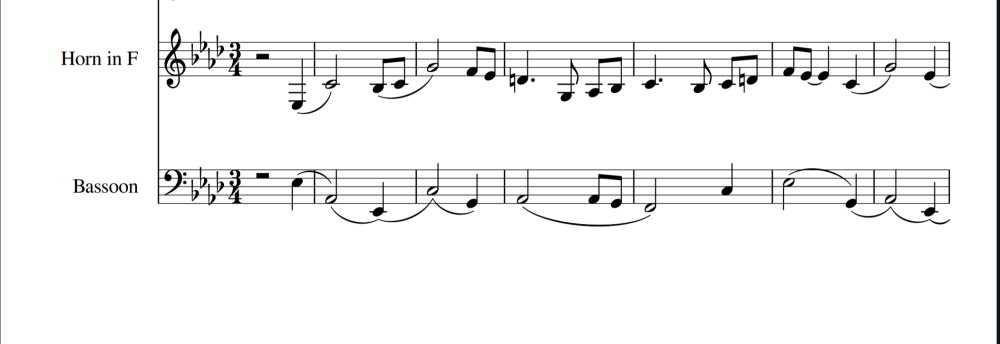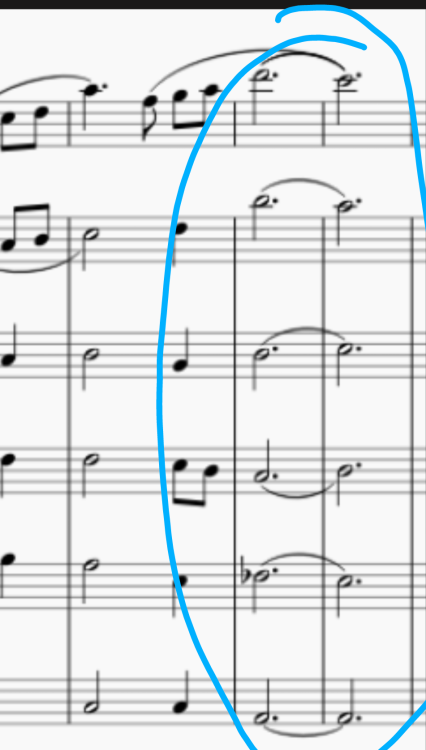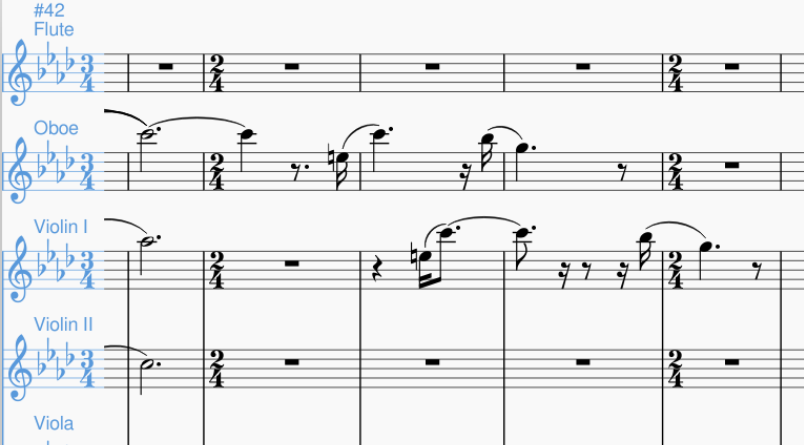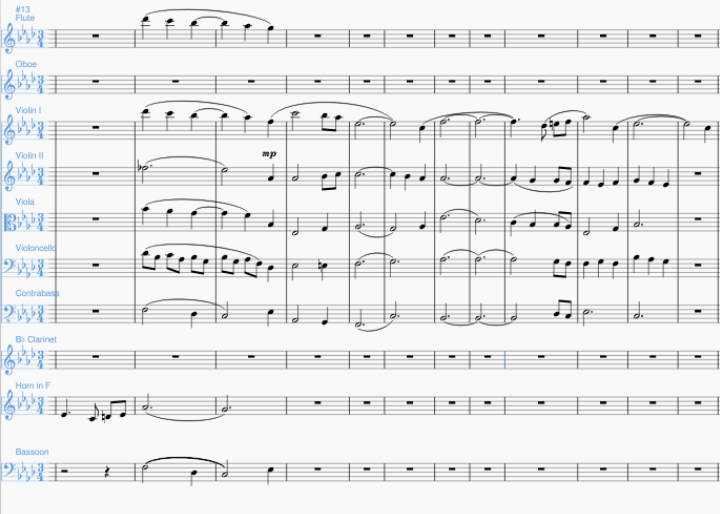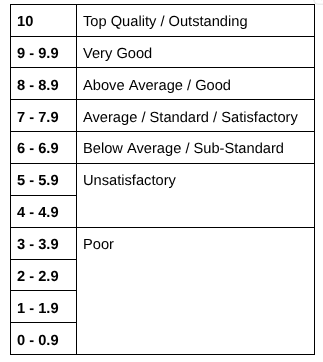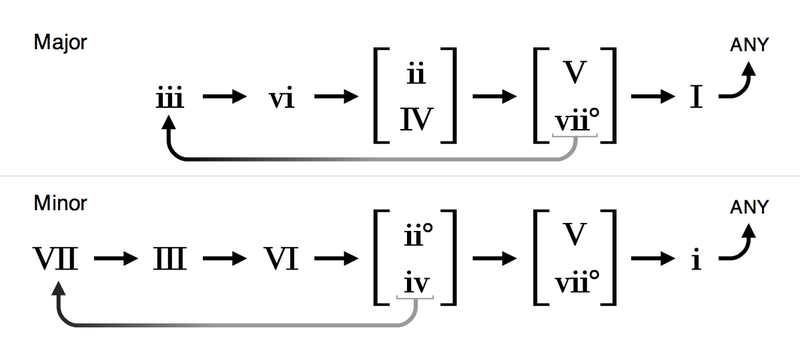All Activity
- Past hour
-
First of all, thank you very much for your analysis. Your review was very comprehensive and meticulous, and I learned a lot from it. It was extremely helpful, and I am very grateful. Could you please explain why, in measure three, the second chord is technically a passing chord but is considered incorrect? Why are students taught to avoid the minor V chord? And in measure three, shouldn’t V necessarily include a B natural? If it has a flat, is that considered wrong? Also, I didn’t quite understand your comment about the alto leap. Did you mean an augmented or diminished leap that you said is forbidden? I have one more question: don’t we have a half plagal cadence, similar to a half authentic cadence that ends on IV? Is it incorrect if a phrase ends on IV? Why must cadences resolve to a tonic? And why is the second inversion of the chord considered wrong? Could you please explain these points in detail?
- Today
-
Gothic Tarantella for Violin and Clavichord
Vasilis Michael replied to PeterthePapercomPoser's topic in Chamber Music
This piece, to my ears, is truly perfect. Amazing. You managed—through the character you wanted to convey—to create something very special. Stylish, with wonderful and unexpected harmonic progressions. The transition to the slow section was dramatic and surprising. Overall, an outstanding piece. You’re a remarkable composer -
Vasilis Michael started following Gothic Tarantella for Violin and Clavichord
-

Nocturne in C-sharp minor
Henry Ng Tsz Kiu replied to Henry Ng Tsz Kiu's topic in Piano Music, Solo Keyboard
Thx bro! I don't know why I wrote like this then but I did. The fugato is quite an unsuccessful attempt; I was not that good at counterpoint then! If this piece is written by me now, I would defintitely cut the whole fugato section out since it is totally unnecessary to retain it. For the harmonies, when I wrote those neapolitan harmonies I didn't even know the term "Neapolitan Sixrh" lol! Henry -

Gothic Tarantella for Violin and Clavichord
Henry Ng Tsz Kiu replied to PeterthePapercomPoser's topic in Chamber Music
Yo Peter, This one is really funny to listen to, nothing to add given how @Monarcheon already given such detailed advice. I like the middle section in Ab major the most. Thank for sharing! Henry -
Sonata no 21 in C minor ( binary form)
Vasilis Michael replied to Vasilis Michael's topic in Piano Music, Solo Keyboard
Exactly as you say, my dear friend. This kind of music and mood is what truly expresses me. That’s my temperament as a person, and it naturally comes out in my music. -

Sonata no 21 in C minor ( binary form)
Henry Ng Tsz Kiu replied to Vasilis Michael's topic in Piano Music, Solo Keyboard
Yeah, because I have just finished listening the 129 examples of the Sonata book I have read, and before writing the Adorned Zither Piano Pieces I have some energy left to review something! I think this one is more in major mode simply because the mood is more light hearted and joyful! And Schubert always did that by giving some slight hope in major mode before returning to minor which makes the tragedy more tragic, thus the minor quality more strongly. Henry -
Henry Ng Tsz Kiu started following Sonata no 21 in C minor ( binary form) and Fantasy impromptu Orchastrated
-
Hey Pabio @Fugax Contrapunctus! I really love this one! Your canonic skill is really mature here. The imitation goes fourth below in each entry and thus there's constant modulation within the piece in the circle of fifth. However it doesn't sound strange at all, but on the contrary very fluent. The canon is of course very technical to be written, but this one doesn't sound technical at all , but conversely enhance the flow and drama of the piece, which build up really well to the climactic end! Thx for sharing! Henry
-
Sonata no 21 in C minor ( binary form)
Vasilis Michael replied to Vasilis Michael's topic in Piano Music, Solo Keyboard
Dear Henry, First of all, I’m glad to see you again after such a long time, and I always look forward to hearing your new compositions, which are truly remarkable. Thank you very much for your kind words. From a technical point of view, I consider this sonata to be my best work so far. As for the modulations — being the greatest admirer of Schubert, who along with Mozart is my favorite composer — moving from one tonality to another is something that haunts me in a pleasant way, of course, and I feel it’s one of the great tricks that helps me evolve each time. This sonata may be in C minor, but it carries a touch more of the major mode — and when it returns to the minor, that minor character is heard even more intensely. Personally, I tend to feel the minor quality more strongly when it emerges within a major key rather than purely in a minor one. I don’t know, maybe that sounds unorthodox or strange, but that’s the feeling it gives me. Once again, thank you for your kind words. -
Hello @Justin Gruber! Welcome to the forum and thx for joining the Halloween Competition! I really like this light hearted piece which for sure match the Halloween theme. Changing meters, naughty interactions between the instruments, as well as some funny dissonance and oblique harmonic motions. I like in the structure that after reaching Section K the tonality is more affirmed in C major even with some later more dissonant passages, and then more reflective passages before the ending, and then section P brings back the opening. This really gives a narrative to the whole piece. Thx for sharing! Henry
-

Sonata no 21 in C minor ( binary form)
Henry Ng Tsz Kiu replied to Vasilis Michael's topic in Piano Music, Solo Keyboard
Hey @Vasilis Michael! I really like the hunting character for this Sonata! Lovely touch and articulation for playing this. The modulations get really adventurous in the development from B major to C# minor and then Eb minor and then F# minor, then F major, Db major and back to C major/minor. It's really Schubertian to have this kind of chord progression! Thx for sharing this light hearted piece! Henry -
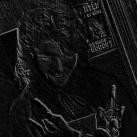
Fall 2025 Halloween Competition
Omicronrg9 replied to PeterthePapercomPoser's topic in Monthly Competitions
Let's go. I'll try. Deadline a bit bad to me but I'm sure something can be done. -
PeterthePapercomPoser started following Sonata no 21 in C minor ( binary form)
-
Vasilis Michael started following Sonata no 21 in C minor ( binary form)
-
Hello again, my friends. Here is the latest sonata in Binary form that I’ve written. From a technical point of view, I believe it’s my best one, and I feel quite happy about it. Musically, like every piece, it’s different and has its own beauty. I hope you like it.
-

Oboe Concerto
GospelPiano12 replied to GospelPiano12's topic in Incomplete Works; Writer's Block and Suggestions
Here is the French Horn + Bassoon intro/prelude material I was writing. I'm feeling mehh about it, but only because it doesn't really connect to the piece imo. Here is the stuff that I am just in LOVE with though. The way the ensemble creates this movement is just wonderful to me. Still working on filling in the string parts and incorporating the French Horn and Bassoon into these sections with the melody. However, I think that's too big of a start to the piece, so I'm still brainstorming on how I can lead into that -> hence the F.H & Bassoon intro/prelude. Now unto the fun stuff Not sure if anyone is familiar with the work of Pierre Boulez, but if you are please let me know. My idea for this section is to have these big jumps up and down in different intervals and have the ensemble mimic and echo those movements in the rests of the oboe. So that way, we get a very, for lack of a better word, "quacky", and almost disjointed sound. The reason I mention Boulez is because of his piece, "Le Marteau sans Maître", that has the exact sound I'm going for. -> wanting to see if I can create a system that will make this portion easier to write,I want it to be less "musical" than the more elegant (only word that's coming to mind), lyrical section. (This would be coming after this part) -
.thumb.png.8b5b433a341551e913a34392660bc95b.png)
Fall 2025 Halloween Competition
PeterthePapercomPoser replied to PeterthePapercomPoser's topic in Monthly Competitions
This is a very informal competition. Usually, in a formal competition we would have dedicated judges who used judging criteria and scoring definitions. But, then, if they were a judge they would not be allowed to participate in the competition themselves. And the submissions would also have to be kept anonymous to stave off any impression of favoritism. But since, ultimately, this competition is just a fun challenge without monetary rewards, we decided to do away with all that formality. But, we would be honored if you (or everybody really) donated their very valuable time to review the music submitted in as detailed a way as you feel is necessary and appropriate! AND, if you review all the participant's works you get an "Ardent Reviewer" badge which everyone will be able to see in your profile! In previous, formal competitions we used the following scoring definitions: And the following scoring categories: It would honor us if you (or anybody who feels up to the challenge) used these categories and definitions to review the pieces submitted! Thank you for whatever time and effort you're willing to give! -

Fall 2025 Halloween Competition
Monarcheon replied to PeterthePapercomPoser's topic in Monthly Competitions
I'm a little confused. If everything's decided via popular poll, what exactly are the criteria for "judging"? For instance, do I need to spend a lot of time on a score? Will I be be viewed less favorably if my audio recording is just standard MIDI? The competition idea is exciting, but don't know where I need to focus my time if I were to join. -
Hello @Justin Gruber and welcome to the forum! Thank you for your submission! I have taken the liberty of editing this post to include the mp3 you uploaded to the other post and I'll delete that other duplicate post since we want you to submit your music as its own dedicated topic so that the members at large can have a space to review it properly. Thanks again for your participation!
-
Justin Gruber started following Fall 2025 Halloween Competition
-
Justin Gruber joined the community
-
Hello everyone, I’d like to share my piece Fumage for flute, oboe, and bassoon as my submission for the Fall 2025 Halloween Competition. 🎃 About the Piece Fumage is inspired by the surrealist art technique of the same name, where smoke from a candle or lamp leaves ghostly, shifting impressions on paper. This piece takes that imagery into sound, with wisps of timbre, sudden bursts, and eerie colorations from the woodwinds. It mirrors candlelight, smoke, and the blurred line between reality and apparition—an atmosphere that fits the surreal and haunting spirit of Halloween. Instrumentation: Flute, Oboe, Bassoon Duration: ~7 minutes Score (PDF) Audio (MIDI) Thanks for listening and I welcome any feedback! –– Justin Gruber
- Yesterday
-
TristanTheTristan started following "Turmoil" for Brass Quintet | Kyle Hilton (UncleRed99)
-
"Turmoil" for Brass Quintet | Kyle Hilton (UncleRed99)
TristanTheTristan replied to UncleRed99's topic in Chamber Music
I like the dynamics added. Sadly the rhythm didn't make total sense at the start to me. Especially not the triplets. Than there it is transposition did with an incredibly good use of dissonance. Sounds like how you describe it. Congratulations! The problem is that 'Turmoil' means uncalm, but this was medium-calm to me. -
Movement 1 Another Stravinsky styled piece... Anyways, my favourite part was bar 11 to 30. The rhythm sometimes is random, but feels like poco accelerando. I saw a cadenza at bar 37 and 45 to 46. I like the chromatic feel. As Omicron said, you have a lack of dynamics and not enough moments that are not tutti. You should add more of these. In contrast with Omicron, I believe the ending made perfect sense. It is also late, here, so I will continue later. Please be patient.
-
Finale in Am for violin and background
TristanTheTristan replied to semotivo's topic in Chamber Music
And background............ Anyways, nice theme, but it is a little bit empty. If you wanted to be minimalist, then there is no problem with that. I don't like perfect fifths, by the way. Else, it is nice! -
so yeah. I do improvise
-
I am also in a jazz band.
-
Is this homework? Or just self-study? Hopefully not the former lol Assuming you're studying both voice-leading and harmony, there are a lot of problems, but the foundations are there! All of your chords have all the chord tones present, which is a great start and, for the most part, you correctly identified your non-chord tones. Measure 1: a. Get in the habit of putting serif lines on all of your major Roman numerals. Most teachers will mark you down if they just see a v because they can't tell if it's major or minor. b. No retrogressions: in the first measure, your V (dominant) chord goes to ii˚6 (predominant), which isn't allowed. I've attached a chord chart for you. c. @Henry Ng Tsz Kiu is right. Leading tones in the outer voices must resolve up to the tonic in the next chord. d. This bar has five beats in it, despite the 4/4 meter. e. And, yes, Henry's also right that your neighbor tone creates a parallel fifth against the alto. Measure 2: a. Your first V6 chord's tenor moves down to the seventh (F) as a passing tone, and sevenths must ALWAYS resolve down, so it should go to E-flat in the next chord, which it doesn't. b. Same issue with leading tones in the outer voices, but this time in the bass. The B-natural should move up to C, which fixes the issue @Henry Ng Tsz Kiu mentioned about avoiding 6/4 chords unless they're serving one of the four functions he mentioned. c. The tenor is only three beats long. Measure 3: a. Bit of a large leap from G to C in the soprano, but this isn't a huge deal. Technically doesn't break any rules, except we want to see it resolve in the opposite direction of the leap. b. The first 6/4 chord here isn't passing, neighboring, pedal, or cadential. If your 6/4 chord requires a leap either in or out, chances are it's not correct, unless it's cadential. c. The second 6/4 chord here is technically passing, but wrong to be coming out of another 6/4 chord. d. No minor v's (yes, minor v's exist, but students are taught to avoid them). If you did make the B-flat a B-natural, you still have a problem because the alto has to leap by an augmented or diminished interval, which is not allowed. Measure 4: a. I think you're misunderstanding what a plagal cadence is: the piece should still end on i, but approached by iv, not ending on iv. Plagal cadences aren't really a thing anyways... long story, but they're more often extensions to previous cadences. I would stick to HCs, PACs, and IACs, unless you're explicitly trying to work with plagal motion. b. End on a root-position chord, not a 6/4. c. The last two beats of this bar have too big of a space between the tenor and alto. Voices should be no more than an octave apart from each other, except for the bass relative to the tenor. There's a reason why students HATE learning this stuff, because it feels arbitrary, and it is. Useful in some cases, for sure, but very arbitrary. You should be proud that you're trying to learn a very niche and difficult thing. Keep at it!



